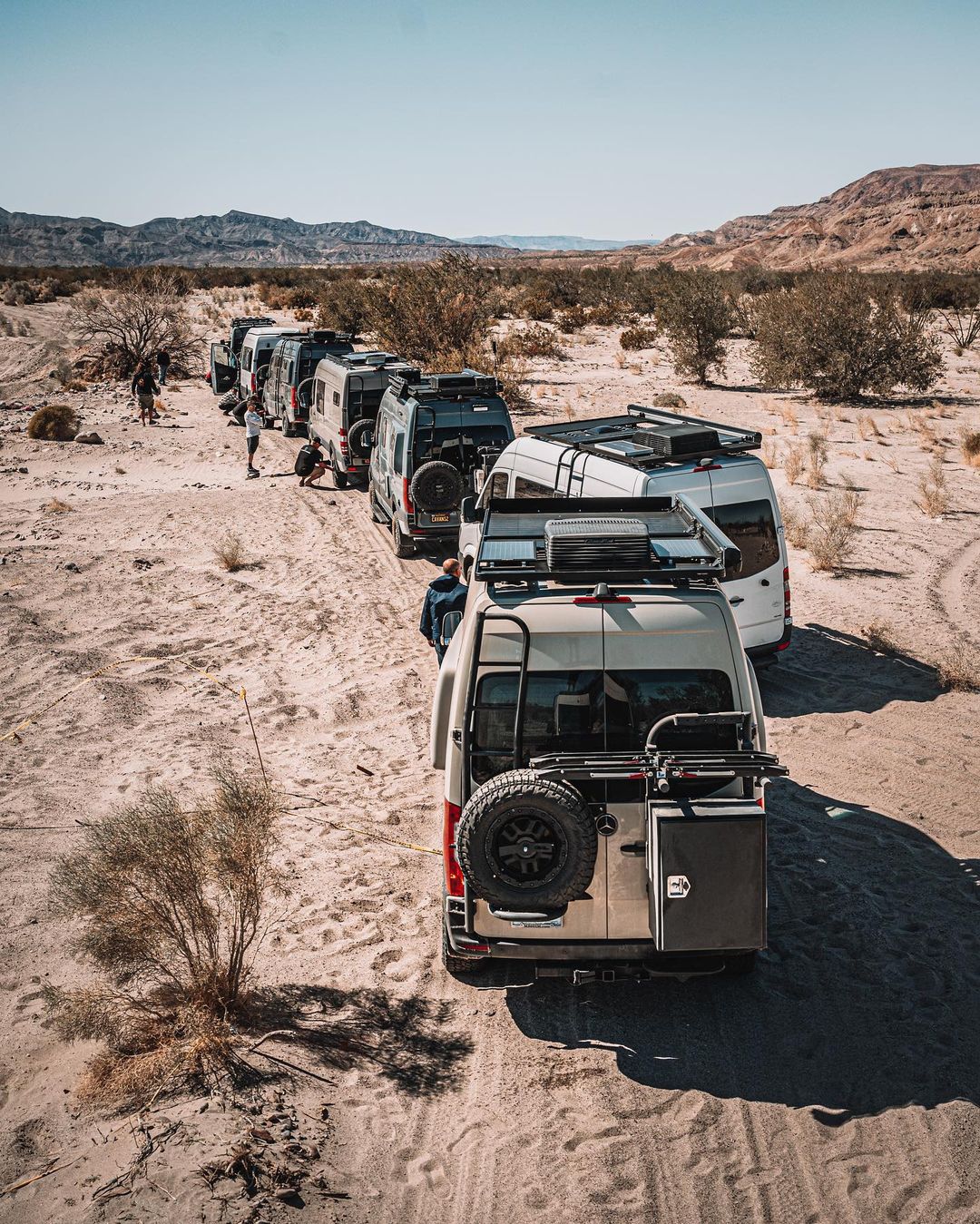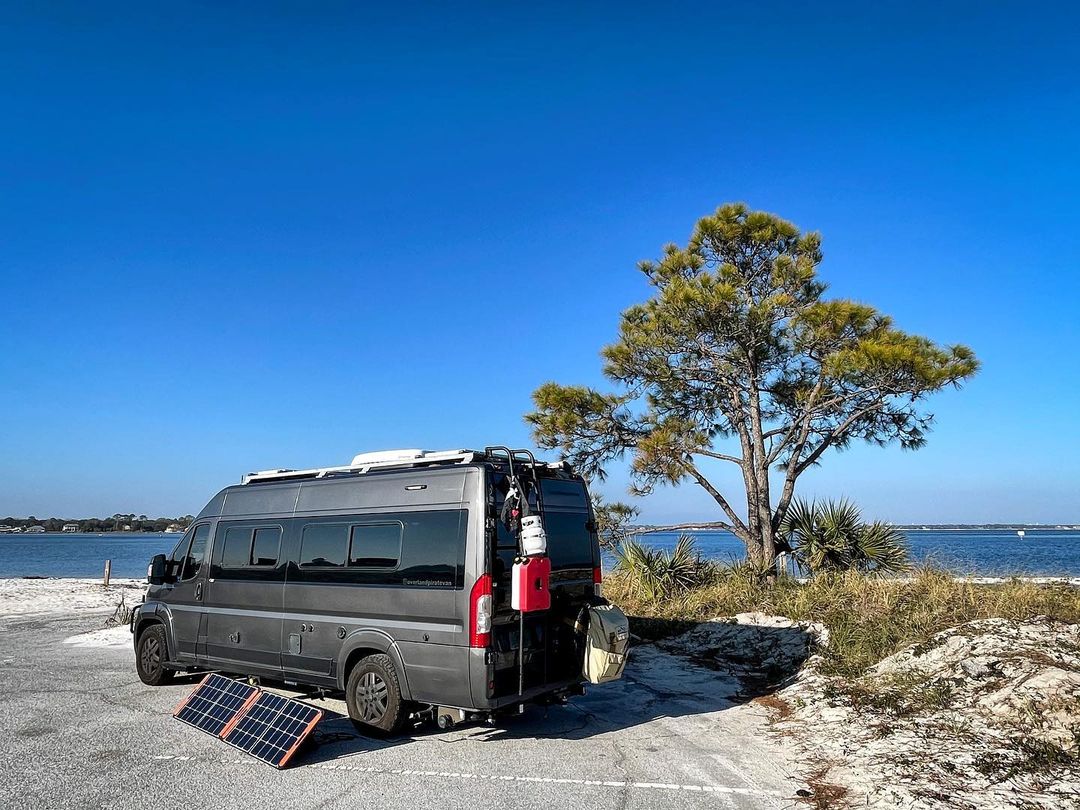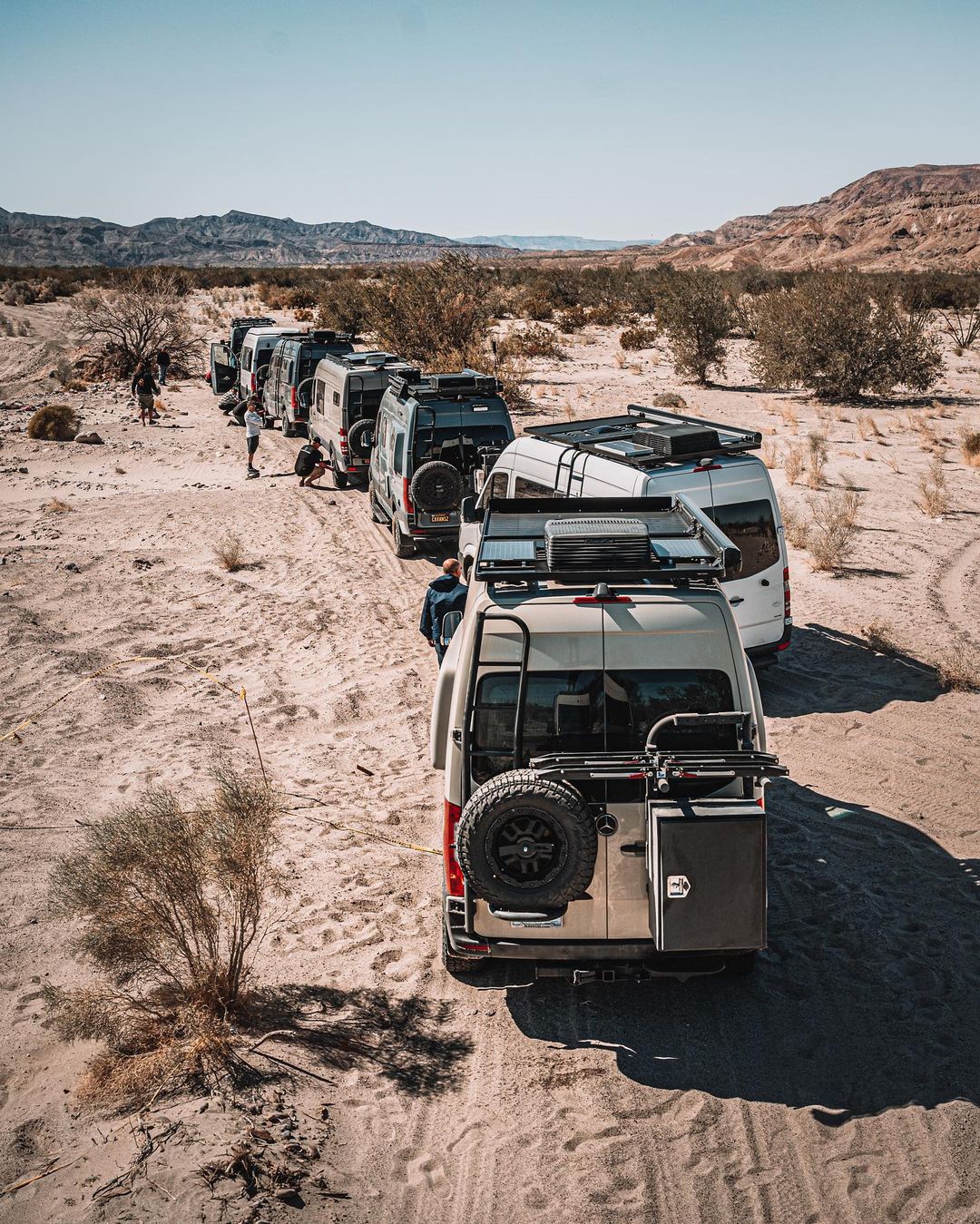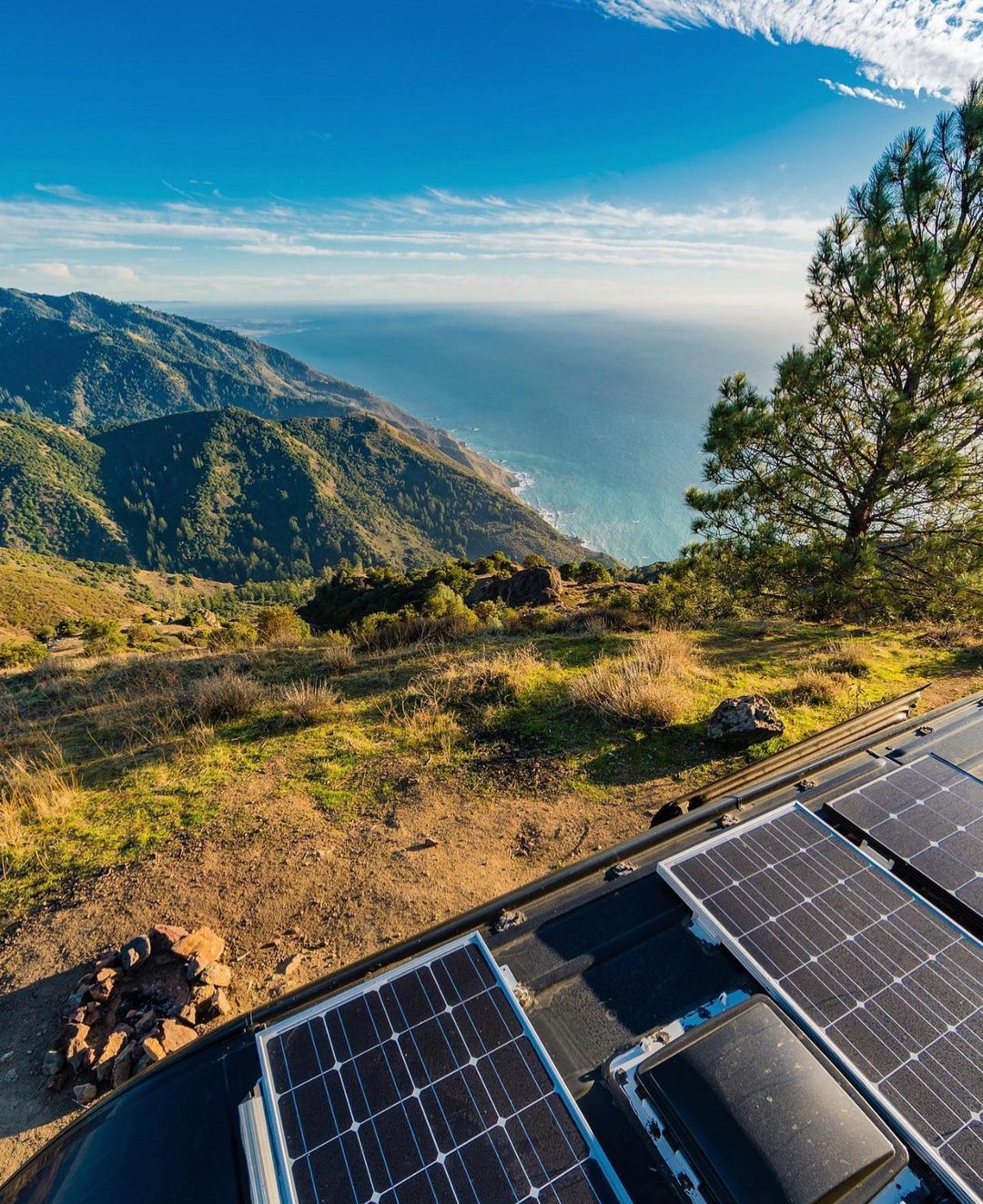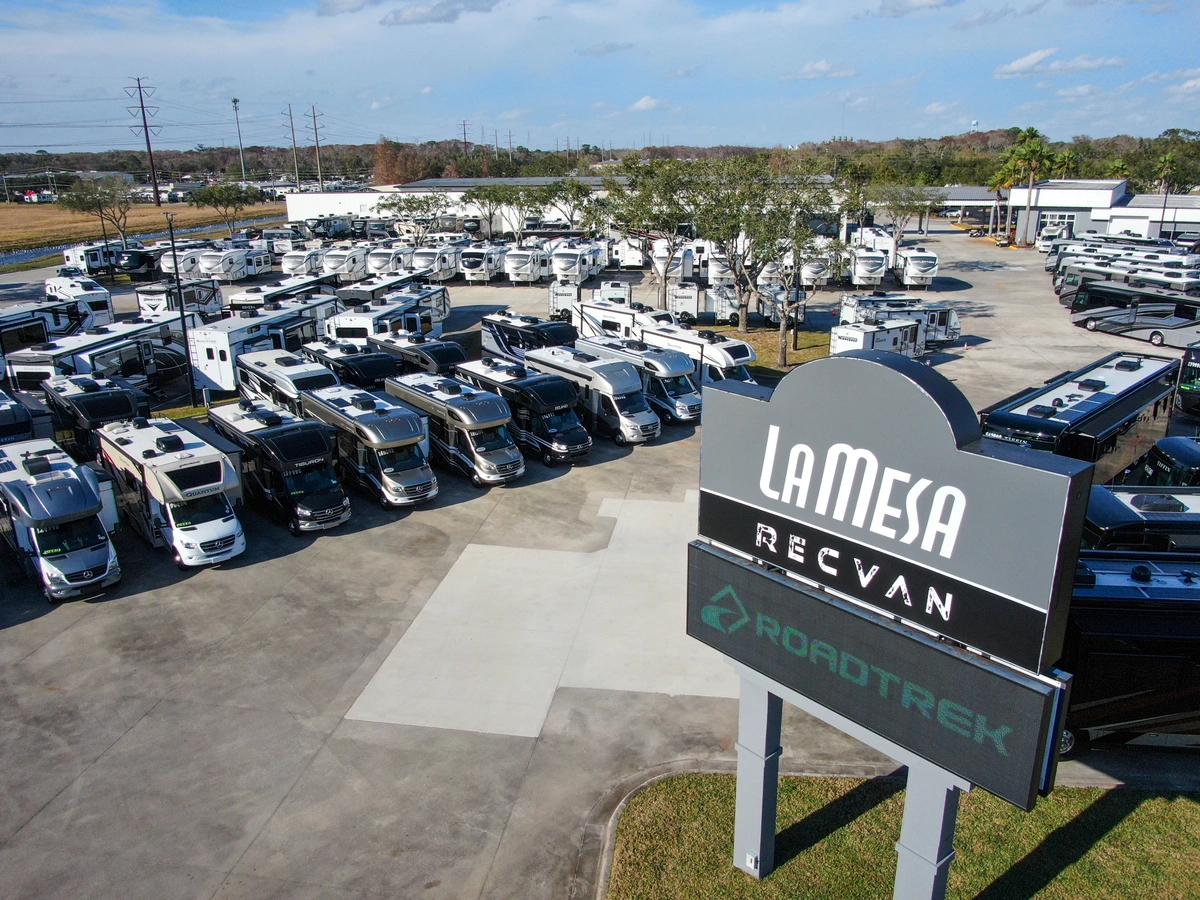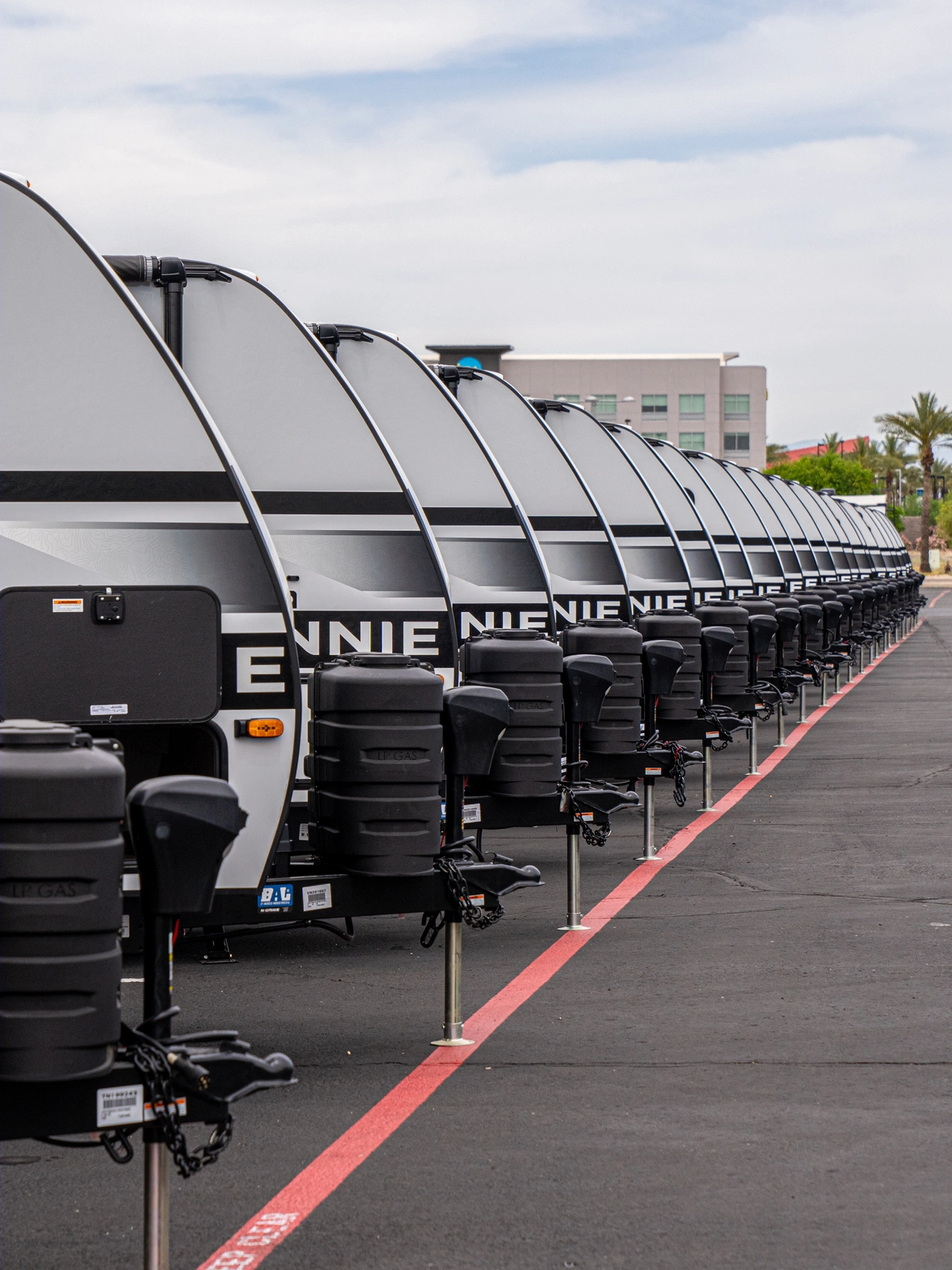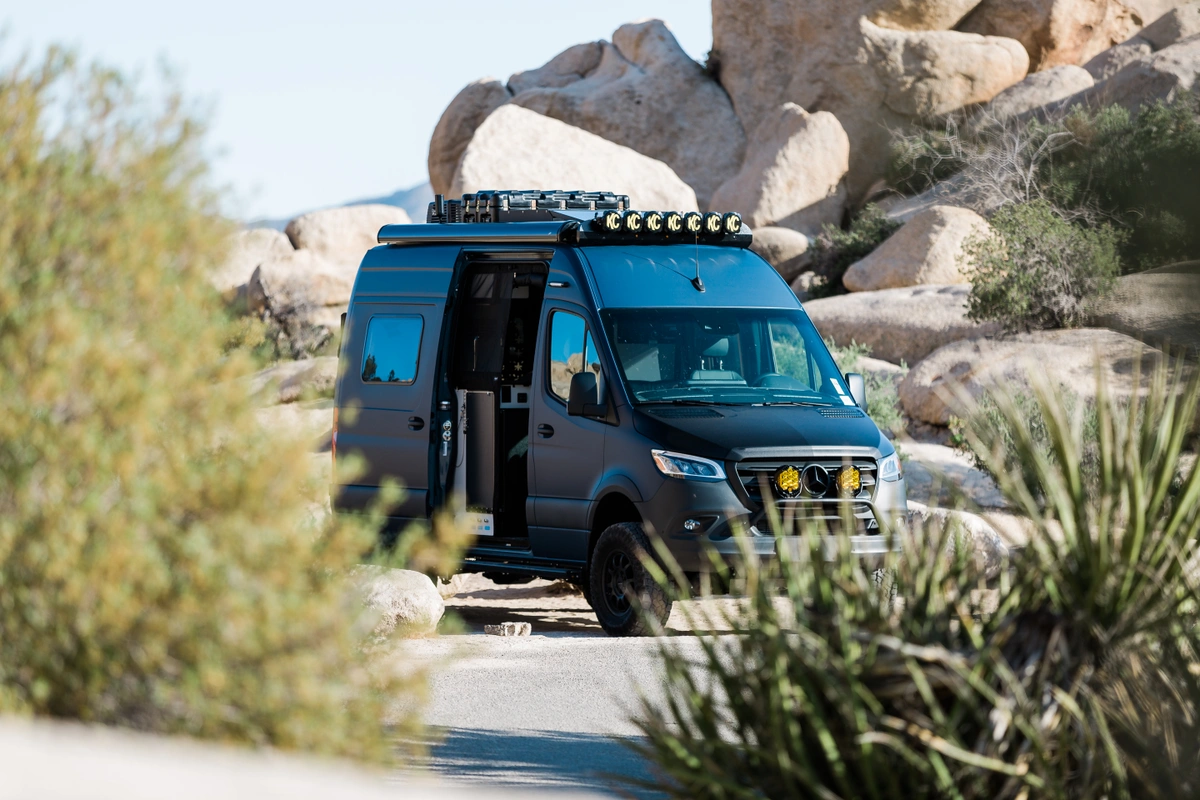Imagine free and abundant off-the-grid power wherever you go. You can light up your camper van, cook in it, keep your refrigerator running, run the hot water heater for a shower, and power all of your electronics...especially in emergencies. It's more than a dream with today's modern RV solar power solutions. You can easily unplug and explore remote places that you've been wanting to visit. Or live and work remotely on the road, wherever you want. And you can escape the crowded, noisy and expensive RV parks and campgrounds. All with a safe, renewable, clean, and quiet power source: the SUN.
Solar power charging systems are not new, but in the last decade, they've grown by leaps and bounds as their cost and availability have flooded into the RV industry. No other power-generation technology has matched solar in the 2010s in terms of its pace of cost reduction. And it's only going to accelerate in the 2020s with further efficiencies and new innovations in solar modules and lithium battery technology.
Cover Photography: @storytelleroverland
Photography: @overlandpirate
What are the components of an RV solar power charging system?
There are a number of components that all work together to collect, store and distribute solar power to a camper van.
1. A solar panel, typically installed on the roof of a camper van, is made up of a group of Individual solar cells that each convert sunlight into direct current (DC) power. When several panels are joined together, it's called a solar array. The panels can be rigid or flexible, and come in a variety of sizes and power capabilities.
2. To get the DC power from the solar panels into the camper van, there are power cables that run across the roof and connect to a cable entry plate. This is the water-tight, vibration-proof connection from the solar panels to the electrical equipment inside the camper van. It provides flexibility for the solar panels to be installed anywhere on the roof.
3. Once inside the camper van, power cables go from the cable entry plate through a solar controller on the way to the solar charging system's batteries. The solar controller helps protect these batteries from damage and maintain their life by preventing them from being overcharged by the solar panels. Typically, there is a digital display for the controller, or it is integrated into the camper van's overall touchscreen whole-coach control system.
4. High efficiency batteries, one or more, store the DC power from the solar panels, so it can be used at times when there may not be sunlight, like at night or in very cloudy weather conditions. The solar controller can continuously keep topping-up the batteries as needed to maintain a good level of electricity for whenever you need to use it.
5. From the batteries, an inverter cable and fuse are used to safely connect to an inverter, which is a power swapper. It converts DC (12 volt) battery power to AC (120 volt) electric power like in a building, which runs your camper van's lights and outlets. Pure sine wave inverters produce a high-quality AC power that is best for running electronics and other sensitive equipment. Modified sine wave inverters are more economical and can be ok for small appliances like coffee makers and toasters. Both types of inverters come in a variety of sizes for different power needs.
6. The inverter is controlled by an inverter remote since inverters are often located close to the batteries, which may be less convenient to access. This is the switch to power the inverter on and off, which is a good practice since the inverter will drain the batteries even when they are not being used for AC power. It also allows you to monitor the inverter's status, battery voltage, and power output. This may be a separate digital panel or integrated into the camper van's touchscreen whole-coach control system.
7. The inverter is connected to a transfer switch, which is the equipment that automatically selects and switches between shore power and inverter power from the batteries. It safely feeds the power from whichever system is selected into the AC breaker panel within the camper van. The transfer switch also prevents AC power from dangerously back feeding to the inverter and batteries.
8. The AC breaker panel distributes power around the camper van to the various individual lights, outlets and appliances. It's connected to the transfer switch and provides a quick and safe shut-off of power to the various lights, outlets, appliances and pieces of equipment that are powered within the camper van.
9. One last component is the battery converter/charger, which converts AC shore power to DC battery power for fast battery charging. It's a workaround and backup for when the solar panels aren't able to generate power or you want to more quickly charge the batteries while you have shore power.
Photography: @storytelleroverland
Are RV solar power charging systems worth the cost?
The naysayers will tend to put priority on the myths and cons of RV solar panels, like the initial investment cost and the time it takes for the system to pay for itself. But if you're an avid boondocker, then solar power really is a must-have for powering all of your modern electric needs. And there are a number of advantages to consider in your decision...whether you buy a new or used camper van that comes with a solar panel system, or you retrofit your current rig. It's not always all about the money.
1. The cost of these systems keeps coming down, and the likelihood is that new panels, batteries and other equipment will cost even less in the future should you need to make updates or replacements.
2. Solar panels ARE still effective and efficient in cold and cloudy climates like the Pacific Northwest or Northeast, where there is less direct sunlight than Southern areas. While the panels don't produce as much energy as in direct sunlight, they still produce energy. And depending on your specific energy and power uses, they may be just as effective over the course of a day for you. It could be that your daily charging needs in direct sunlight might be fulfilled in 3 hours in direct sunlight, but in 8 hours in cloudy conditions, either way providing the power you need at night after charging during the day. Once your batteries are fully charged, that's all the daylight you need until you use some or all of the power the batteries hold.
3. Shore power isn't always available where you want to be in your camper van. Whether there are a limited number of RV campsites at a park or you simply want to boondock off the beaten path, a solar charging power system can provide additional power options for extending your power needs. And it really comes in handy if and when you have an emergency with a dead phone and no gas.
4. The costs of a daily, weekly or monthly campsite with electric hookups can quickly add up if you are spending a good chunk of time in your camper van.
5. Environmentally friendly footprint. Instead of burning a lot of gas with a generator, you're utilizing a clean and renewable source of energy that won't add to climate change.
6. Peace and quiet. Solar power charging systems don't make the noise or smell like a gas generator when you don't have shore power. And if you're in the middle of nowhere and run out of gas or have a gas leak, solar power is an excellent backup to a generator.
7. If you've financed your camper van or solar charging system cost over a long period of time (e.g. 10 or more years), the additional cost for the system and the power it generates is spread out over those many years, whereas an RV park hookup is an immediate expense that you have to pay out on a daily, weekly or monthly basis.
8. There's rarely any maintenance with RV solar panels, other than a light surface cleaning.
Photography: @joyryder
Can I run my camper van's AC or heater with an RV solar power charging system?
It depends. Some RV manufacturers have figured this out, and others not so much. You'll want to research which RV brands and models have worked well and been field-tested by other RV'ers. It's less likely a 3rd-party aftermarket system will successfully work out all the issues to run your AC or heater for long and in extreme climate conditions. You're probably not going to be able to generate enough power from your solar panels to run your AC or heater for a very long time in extremely hot or cold weather conditions, like August in Phoenix, Arizona or January in Juneau, Alaska. Camper van air conditioners typically require a lot of power to start and continue running. The number of panels and batteries, and their capacities, needed to generate enough power to run your AC or heater off of solar is still a significant hurdle to jump. But as panel and battery technology continues to improve and become more efficient and cost effective, this may be easier in the future. A gas generator is still a better solution for running the AC or heater for significant amounts of time in a camper van when boondocking or dry camping. Solar is best for powering most things other than air conditioning or heating. Keep in mind that you can have both a solar charging system and a gas generator and then you have options depending on your situation.
What about using portable RV solar panel charger kits with my RV?
Whether you want to quickly and easily add solar panel charging to an older RV that doesn't have a solar power charging system, or you want to supplement the solar charging capabilities of your RV's current solar charging system, there are a number of flexible and cost-effective solutions available. There are basically three categories of portable solar panels:
1. Thin-Film Solar Cells: Affordable, versatile, and flexible. These are the easiest to be manufactured, but they tend to be larger and bulkier than the other 2 crystalline types. They also tend to have a shorter lifespan, so they want last as long.
2. Monocrystalline Panels: The classic looking solar panel most people are familiar with. This type of panel is very efficient, durable and has a high-power output. Which typically makes them the most expensive category of solar panels.
3. Polycrystalline Panels: Blue in color with a spotted appearance. More affordable than the Monocrystalline panels but less efficient and more sensitive to high temperatures. The "in-between" choice.
These portable solar charger kits are limited in the amount of power they can generate while still remaining portable. So they are great for recharging your RV battery (like in an emergency) or powering small electronics. And they can be fast to setup and use. But in terms of running the highest electrical-need appliances in your RV, a permanent built-in solar system with lithium-ion batteries is the best option.
Going Solar? A Guide to Choosing Solar Energy for Your RV
Mar 19, 2021 | 10 min read